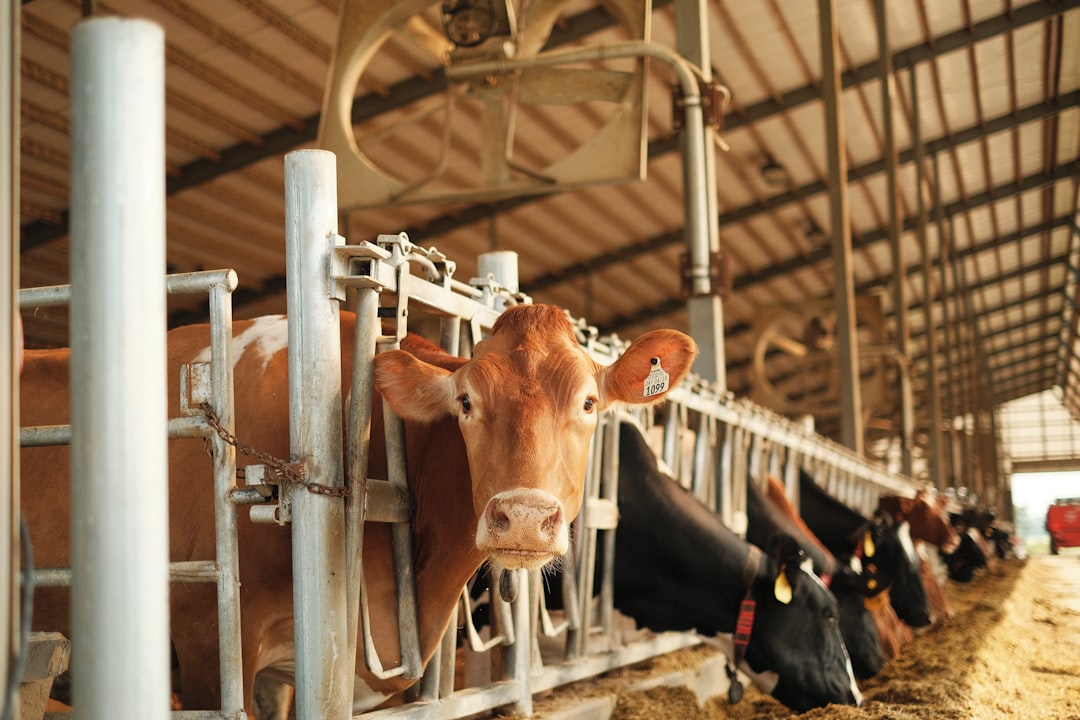The news about H5N1 in dairy cows has prompted increased sales of raw (i.e., unpasteurized) milk. This could be due to increased awareness of raw milk in general. However, another driver is that consumers think they can get immunity against H5N1.
This is highly unlikely, and the risk-benefit tradeoffs of raw milk need to be seriously considered.

Immune protection from drinking raw milk? Highly unlikely.
There are two hypothetical routes to immunity, but on a biological level, are likely impossible to come from consuming raw milk:
Antibodies. Milk (both raw and pasteurized) is full of nutrients and antibodies, and it’s not unreasonable that a cow infected with H5N1 would have antibodies in its milk. But these antibodies are only good for local things, like GI infections. This is called passive immunity because it is short-lived and generates no memory. Once consumed by humans, these antibodies do not enter blood circulation. Thus, they can’t help with respiratory infections like H5N1. Cow milk has another issue: it overwhelmingly contains a specific type of antibody (called IgG1), but it is rapidly degraded by our stomach acids.
Virus. The FDA has indeed detected H5N1 viral fragments in milk. But, for the immune system to be activated, the virus has to jump a lot of hurdles. First, the flu’s membrane is fatty, so it can be digested by bile acids, inactivating the virus. Its proteins are also sensitive to gastric juices. If the virus does survive, it would need to replicate, and the extent to which the GI tract can support H5N1’s replication is unclear. However, among cats that drank raw H5N1-infected milk in the current outbreak, more than 50% died. We don’t know if it would have the same impact on humans, but these aren’t great odds to play around with.
What about vaccines? We ingest some of these, right?
Yes, we can ingest some vaccines, like rotavirus or the oral polio vaccine.
However, these rely on diseases that can effectively replicate in the gut. Also, they have been adapted to be ineffective at making people sick.
There are still big hurdles with oral vaccines because of stomach acid. Oral cholera vaccines’ effectiveness, for example, is reduced. In fact, it’s recommended to avoid food and drink (that may stimulate acid production) during vaccination.
Other rumors
There are other rumors, beyond immunity, people cite for consuming raw milk. These have largely been discredited:
Unpasteurized milk doesn’t have more nutrients. A meta-analysis (40 separate studies pooled) found only minor losses in some nutrients, like B1 and B6, from pasteurization. But these nutrients are low in milk generally—we get them from other dietary sources.
Raw milk is not better for people who are lactose intolerant. Raw milk does have a bacteria that creates lactase—an enzyme that breaks down lactose—which is removed during pasteurization. This theoretically means raw milk would be better for those who are lactose intolerant. However, this doesn’t seem to translate into real-world impact. A small randomized controlled study found no difference in digestive symptoms when humans drank raw vs. pasteurized milk.
Does raw milk protect against asthma and allergies? There’s mixed evidence. Another meta-analysis found that children who drank raw milk were less likely to develop asthma. However, correlation doesn’t equal causation, and environmental factors may be at play. Scientists are trying to untangle this mystery.
It all comes down to benefits vs. risks
People drink raw milk for many reasons—support for local farmers, taste differences, and common misconceptions about health benefits.
However, this needs to be weighed against risks. As said above, there is a small chance the virus can infect you. Also, raw milk is a feeding ground for bacteria due to its high water content, neutral pH level, and high amount of nutrients. This is a problem because there is potential for the milk to be contaminated after it leaves an animal. After all, milk has many touchpoints, like machines and containers, which can introduce bacteria.
Before pasteurization and other safety measures at farms, it’s estimated that 65,000 people died over a 25-year period from consuming contaminated dairy. Today, we have far fewer serious illnesses, but they still occur.
From 2005-2016, a study found that among 232 dairy-related illness outbreaks, unpasteurized milk accounted for 66% of them. This resulted in 1,735 illnesses, 169 hospitalizations, and 2 deaths.
Half of raw milk-related outbreaks have involved at least one child under age 5. It’s also higher risk for those with weaker immune systems, such as pregnant women, older adults, and the immunocompromised.
These infections can have lingering consequences, too. For example, C. jejuni can cause Guillain-Barre syndrome, which can leave people paralyzed. E. coli O157:H7 can cause a rare but serious disease that affects kidneys and the blood clotting system.
Risk-based choices are not always black and white. But drinking raw milk is like playing roulette, with some potentially serious risks, especially for children.
Bottom line
Raw milk won’t likely help with H5N1 immunity, and the risk-benefit tradeoffs of raw milk need to be seriously considered. There is a reason we have been pasteurizing milk for more than 100 years.
Love, YLE and EN
PS. Many of you are asking about raw cheese. I thought this was a great article.
“Your Local Epidemiologist (YLE)” is written by Dr. Katelyn Jetelina, MPH PhD—an epidemiologist, data scientist, wife, and mom of two little girls. During the day she works at a nonpartisan health policy think tank and is a senior scientific consultant to a number of organizations, including the CDC. At night she writes this newsletter. Her main goal is to “translate” the ever-evolving public health science so that people will be well equipped to make evidence-based decisions. This newsletter is free thanks to the generous support of fellow YLE community members. To support this effort, subscribe below:






I'm so impressed that you continue to be willing to anger fringe groups and conspiracy theorists. Bravo! I had a brush with the raw milk stuff a while back. Pasteur was a smart guy. There's lots wrong with modern technological culture, but pasteurization isn't.
One of the links you cited does not support your thesis. You wrote:
"From 2005-2016, a study found that among 232 dairy-related illness outbreaks, unpasteurized milk accounted for 66% of them. This resulted in 1,735 illnesses, 169 hospitalizations, and 2 deaths."
The linked article found by clicking the word "study" shows abundant evidence of benefits from raw milk, the opposite of what you wrote. Right below your highlighted section it has a data table that shows if you do get sick from dairy products, pasteurized daily products are far more likely to put you in the hospital or kill you.
Right above the section you highlighted was this: "Pasteurized dairy products were responsible for 32 dairy-related outbreaks (13% of all dairy), 2,225 illnesses (45%), 120 hospitalizations (26%), and 17 deaths (74%)" Much more pasteurized daily is consumed compared to raw dairy, but there is a long term trend of increased sales of raw dairy.
The problem with this kind of infection data is it does not distinguish between the different types of raw milk that cause infection and lumps them all together. There is conventional milk that was supposed to be pasteurized but wasn't. Conventional daily is much more likely to be full of dangerous bacteria before it's pasteurized. The 2nd type is raw milk from a farmer who is not certified and maybe does not test his milk. The 3rd type is certified raw milk like in California, where the milk is frequently tested and regulated by the state. Certified raw milk is the safest type, but it is far more expensive than pasteurized milk.
Getting sick from any kind of dairy is extremely rare. Article: "Of outbreaks with identified food vehicles, 232 (4.4%) involved dairy foods (Supplementary Table 1), resulting in 9.2% of all illnesses."
Raw milk consumption has gone up, but outbreaks of infection have gone down, according to this article. Raw milk is safer than it was in the past.
Very strange that raw milk consumption went up after the CDC announced bird flu was in milk but also said pasteurized milk was safe, implying that unpasturuized milk was unsafe. It's like the public is doing the opposite of what the CDC advises.